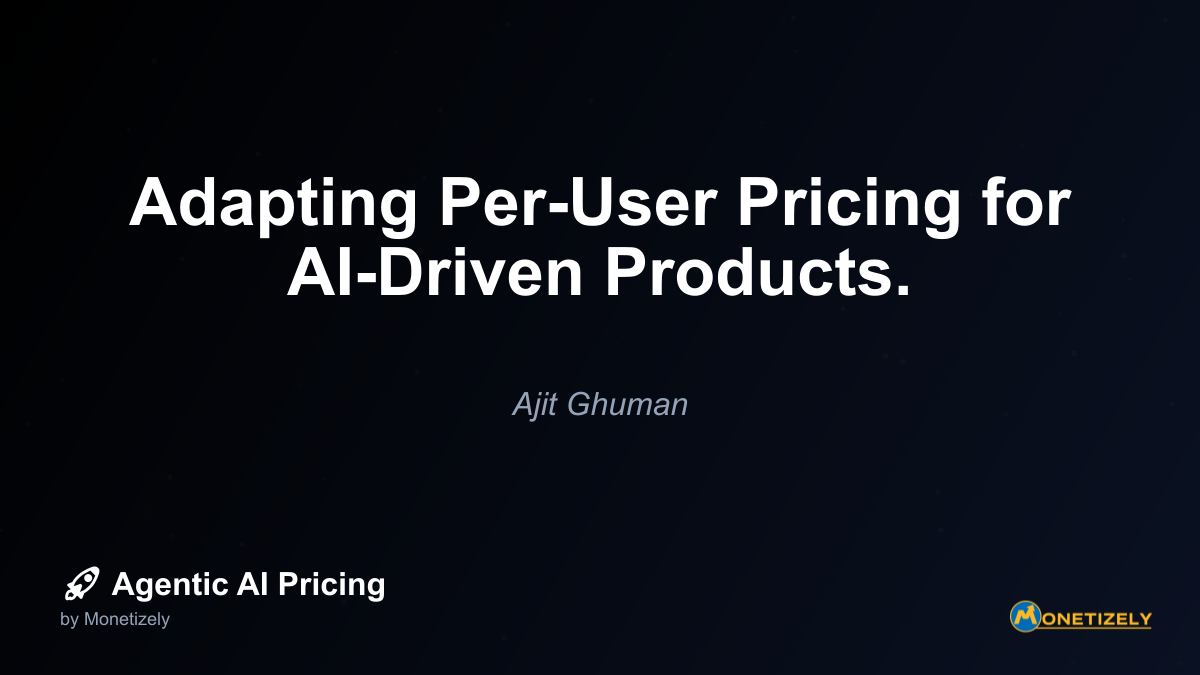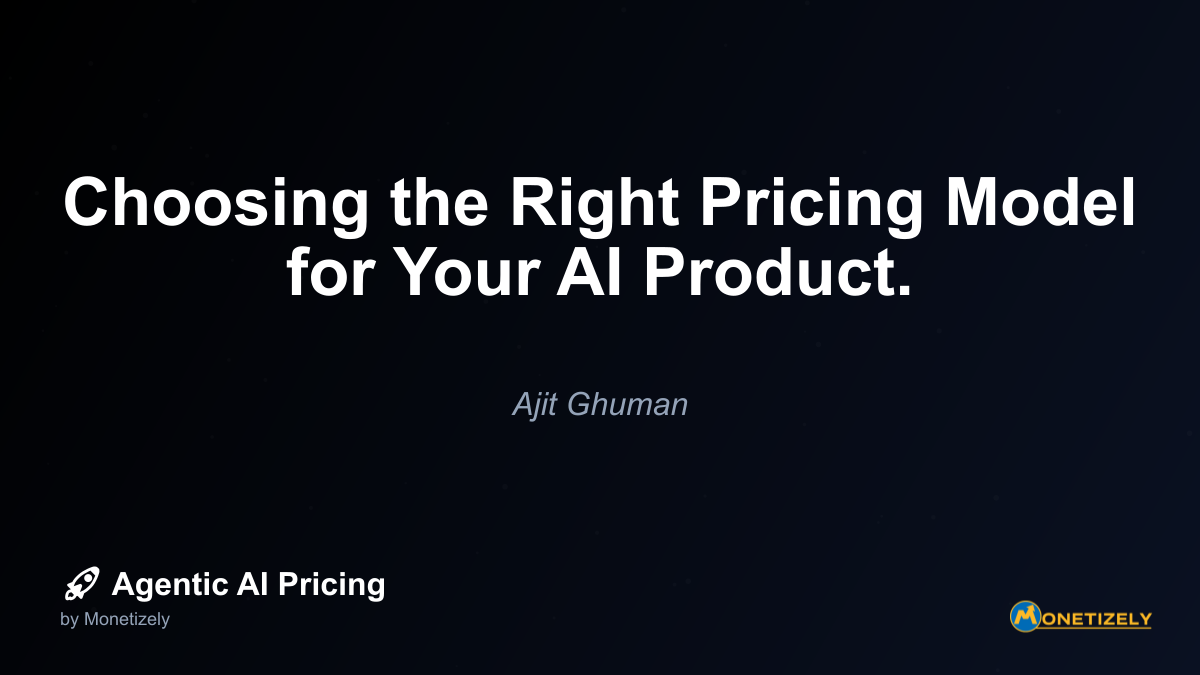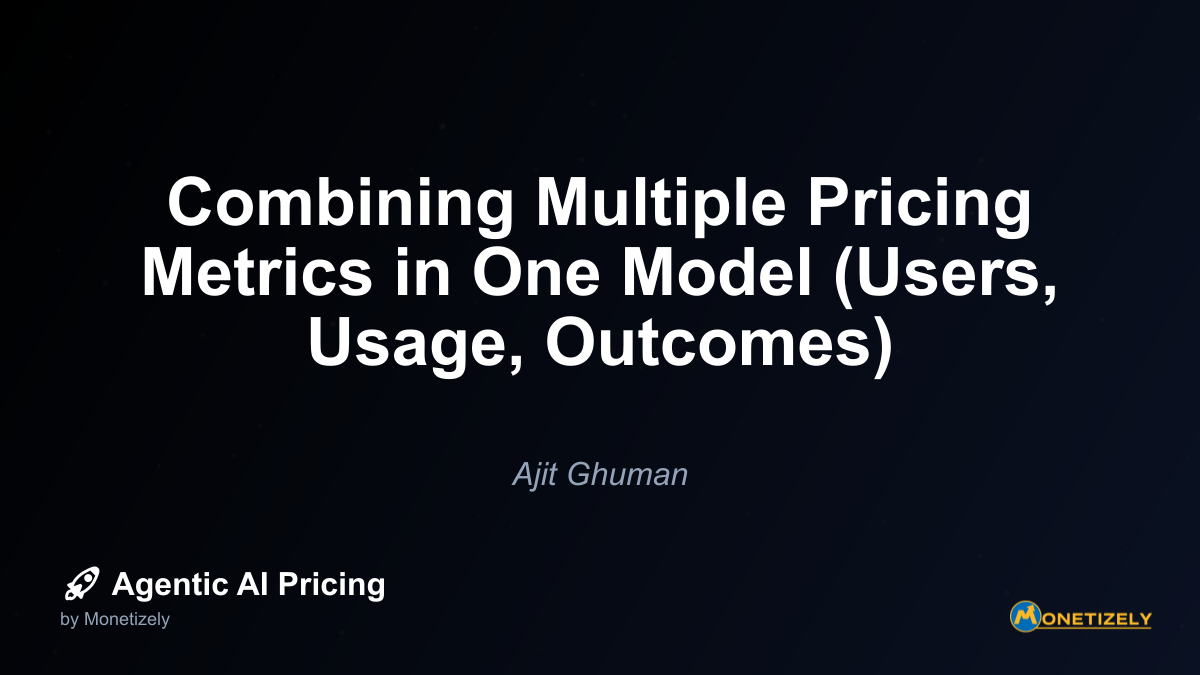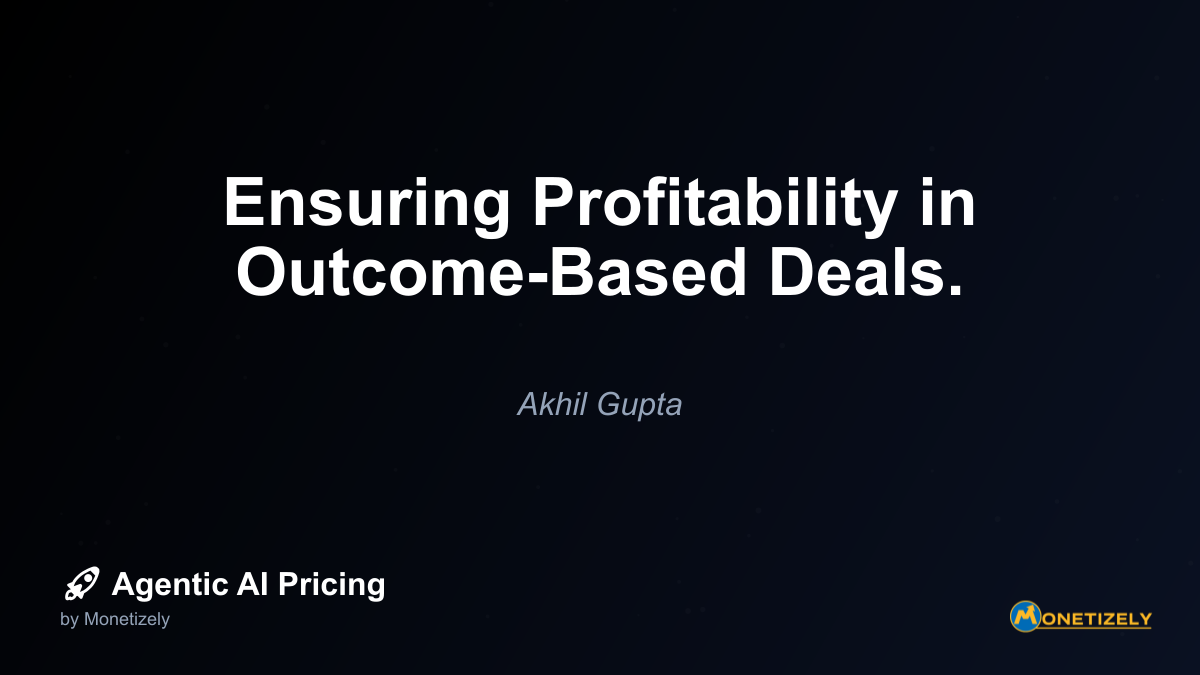· Ajit Ghuman · Agentic AI Pricing Strategies · 8 min read
Pricing AI Features: Add-Ons vs. Bundling into Existing Products.
AI and SaaS Pricing Masterclass
Learn the art of strategic pricing directly from industry experts. Our comprehensive course provides frameworks and methodologies for optimizing your pricing strategy in the evolving AI landscape. Earn a professional certification that can be imported directly to your LinkedIn profile.

Challenges of the Bundling Approach
Despite its benefits, bundling AI features presents several challenges:
Value Dilution: When AI features are included at no additional charge, customers may undervalue or overlook them, reducing their impact on purchasing decisions.
Revenue Attribution Difficulties: Bundling makes it harder to measure the specific revenue contribution of AI features, potentially complicating investment decisions.
Development Cost Recovery: Without direct monetization, companies must recover AI development costs through higher base prices or increased acquisition/retention, which can be difficult to measure.
Expectation Management: Once features are bundled, moving them to paid tiers later can trigger significant customer backlash and churn.
Resource Allocation Challenges: Without clear revenue attribution, securing ongoing development resources for AI features can become more challenging internally.
When to Choose the Bundling Model
Bundling AI features tends to work best under these conditions:
When network effects are critical: Features that become more valuable with widespread adoption benefit from the accelerated uptake bundling provides.
In highly competitive markets: When competitors are rapidly adding AI capabilities, bundling can prevent feature-by-feature competition and maintain market position.
For data-dependent AI systems: Features that improve with usage data benefit from the wider adoption bundling enables, creating a virtuous cycle of improvement.
When targeting mass-market adoption: Consumer applications and products targeting broad business adoption often see better results with bundled approaches.
For retention-focused strategies: When customer lifetime value depends more on retention than initial pricing, bundling AI features can strengthen core product stickiness.
Hybrid Approaches: Combining Add-On and Bundling Strategies
Many successful companies are finding that hybrid approaches offer the best of both worlds, combining elements of both add-on and bundling strategies.
Tiered AI Feature Distribution
One effective hybrid approach involves strategically distributing AI features across different product tiers:
- Base Tier: Include fundamental AI capabilities that enhance core product functionality and demonstrate value
- Mid-Tier: Bundle more sophisticated AI features that appeal to professional users
- Premium Tier: Include advanced AI capabilities with specialized use cases
- Add-On Marketplace: Offer highly specialized or resource-intensive AI features as separate purchases
This approach allows companies to use basic AI features to drive adoption while monetizing premium capabilities through tiered pricing and specialized add-ons.
Time-Based Bundling Strategies
Another effective hybrid approach leverages timing to maximize both adoption and revenue:
- Early Access Premium: Offer new AI features first as premium add-ons for early adopters willing to pay for innovation
- Gradual Bundling: As features mature and development costs are recovered, migrate them into higher-tier bundles
- Eventual Standardization: Once features become expected table stakes, include them in base offerings
This approach allows companies to recover development costs through early adopters while eventually using these features to enhance core product value.
Case Studies: Successful AI Feature Pricing Strategies
Case Study 1: Adobe’s Creative Cloud AI Features
Adobe has implemented a sophisticated hybrid approach to AI feature pricing across its Creative Cloud suite. Basic AI capabilities like content-aware fill are bundled into standard applications, while more advanced features like generative fill are included in higher-tier subscriptions. Meanwhile, specialized capabilities like Adobe Firefly are offered through separate consumption-based pricing.
This multi-layered approach has allowed Adobe to:
- Drive broad adoption of fundamental AI capabilities
- Use advanced AI as a differentiator for premium tiers
- Create new revenue streams for specialized AI tools
- Maintain competitive positioning against AI-first challengers
The result has been increased subscription retention while simultaneously creating new revenue opportunities.
Case Study 2: Salesforce Einstein AI Integration
Salesforce took a different approach with its Einstein AI platform, strategically bundling certain AI capabilities into core products while offering others as premium add-ons:
- Basic predictive analytics were integrated into standard CRM functionality
- Industry-specific AI solutions were bundled into vertical product editions
- Advanced capabilities like Einstein GPT were positioned as premium add-ons
This approach enabled Salesforce to:
- Enhance core product value perception with basic AI
- Create compelling vertical-specific offerings
- Generate incremental revenue from advanced AI capabilities
- Establish market leadership in AI-enhanced CRM
The strategy has successfully driven both platform adoption and incremental revenue growth.
Key Factors in AI Feature Pricing Decisions
When determining whether to bundle or separately price AI features, companies should consider several critical factors:
1. Development and Operational Costs
AI features often involve significant development costs and ongoing operational expenses, including:
- Research and development investments
- Specialized talent acquisition and retention
- Computing infrastructure and API costs
- Data acquisition and management
- Continuous model training and improvement
These costs must be recovered either through direct feature monetization or through the strategic value the features add to the overall product.
2. Competitive Landscape Analysis
The competitive environment significantly influences optimal pricing strategies:
- If competitors offer similar AI features as standard inclusions, charging separately may position your product unfavorably
- If competitors charge premium prices for comparable features, bundling can create compelling differentiation
- First-movers in a category have more flexibility to establish premium pricing for novel AI capabilities
- Late entrants may need to bundle features to maintain competitive parity
Regular competitive analysis should inform ongoing pricing adjustments as the market evolves.
3. Customer Value Perception
Understanding how customers perceive the value of AI features is crucial:
- Features that deliver obvious, immediate value are more successfully sold as add-ons
- Capabilities that provide subtle or long-term benefits often work better as bundled inclusions
- Value perception varies significantly across customer segments and use cases
- Education and demonstration are often necessary to establish willingness-to-pay
Customer research, including willingness-to-pay studies and feature value ranking, should guide pricing decisions.
4. Data Strategy Considerations
AI features often become more valuable as they accumulate usage data, creating strategic considerations:
- Bundling drives broader adoption, generating more training data to improve AI models
- This improvement creates a competitive advantage that may justify subsidizing early access
- Data network effects can create winner-take-most dynamics in certain categories
- Privacy considerations and data rights may influence optimal pricing approaches
Companies should evaluate whether data accumulation benefits justify reduced direct monetization.
Implementation Best Practices for AI Feature Pricing
Regardless of which pricing approach you select, certain implementation practices increase the likelihood of success:
Clear Value Communication
For both bundled and add-on AI features, clearly articulating value is essential:
- Quantify benefits in customer-relevant terms (time saved, revenue increased, costs reduced)
- Provide concrete examples and use cases that resonate with target segments
- Demonstrate before-and-after scenarios to illustrate improvement
- Use customer testimonials to validate value claims
- Offer comparison tools to help customers understand feature benefits
The more clearly customers understand the value, the more successful any pricing strategy will be.
Granular Usage Analytics
Implementing detailed analytics helps optimize pricing strategies over time:
- Track feature adoption and usage patterns across customer segments
- Measure impact on key metrics like retention, expansion, and referrals
- Identify which AI capabilities drive the most value for different user types
- Use data to inform future bundling and unbundling decisions
- Correlate feature usage with willingness to pay in different segments
These insights enable continuous refinement of pricing approaches as markets evolve.
Thoughtful Transition Management
As AI features mature, their optimal pricing strategy may change, requiring careful transition management:
- Provide generous grandfathering for existing customers when moving features between tiers
- Communicate changes well in advance with clear rationales
- Offer migration incentives when shifting pricing models
- Use feature enhancements to justify pricing changes
- Test transitions with limited segments before broad implementation
Proper transition management preserves customer goodwill while enabling necessary pricing evolution.
Looking Forward: AI Pricing Trends and Future Considerations
The rapidly evolving AI landscape continues to reshape optimal pricing strategies. Several emerging trends will influence future approaches:
Consumption-Based AI Pricing Models
As AI capabilities become more resource-intensive, consumption-based pricing elements are increasingly being incorporated into both bundled and add-on approaches:
- Per-query pricing for large language model interactions
- Compute-time billing for resource-intensive generative tasks
- Volume-based tiers for high-frequency AI operations
- Outcome-based pricing tied to successful AI completions
These models align costs with value creation while managing unpredictable resource consumption.
Personalized AI Feature Bundles
Advanced analytics and AI itself are enabling more sophisticated approaches to feature bundling:
- AI-recommended feature packages based on usage patterns
- Dynamic bundling that evolves with customer maturity
- Self-optimizing pricing that adjusts based on feature utilization
- Value-based packaging that aligns with specific customer outcomes
These approaches maximize both adoption and monetization by tailoring offerings to specific needs.
Ecosystem-Driven Pricing Strategies
As AI features increasingly connect across product ecosystems, pricing strategies are evolving to reflect these relationships:
- Cross-product AI bundles that enhance multiple applications
- Partner ecosystem pricing that incorporates third-party AI capabilities
- Platform-level AI subscriptions that span multiple products
- Marketplace approaches for specialized AI features and integrations
These strategies recognize the interconnected nature of modern AI capabilities.
Conclusion: Building a Sustainable AI Pricing Strategy
The decision between add-on and bundled pricing for AI features is rarely binary. Most successful companies implement nuanced approaches that evolve over time, combining elements of both strategies to maximize both adoption and revenue.
The optimal approach balances several key considerations:
- Strategic objectives: Prioritize adoption, revenue, or competitive positioning based on your current market position
- Customer segments: Align pricing approaches with the needs and willingness-to-pay of target segments
- Feature maturity: Adjust pricing as features evolve from innovative differentiators to expected capabilities
- Competitive dynamics: Respond to market pricing trends while maintaining sustainable economics
- Value delivery: Ensure pricing reflects the genuine value created for customers
By thoughtfully navigating these considerations, companies can develop AI feature pricing strategies that drive adoption, deliver customer value, and create sustainable competitive advantage.
The most successful organizations view AI pricing not as a one-time decision but as an ongoing strategic process that evolves with technology capabilities, market expectations, and business objectives. Through continuous experimentation and refinement, companies can unlock the full potential of AI features while building sustainable business models in the rapidly evolving AI landscape.
For organizations navigating these complex decisions, the right approach combines rigorous analysis with strategic flexibility—creating pricing architectures that can evolve alongside AI capabilities themselves.
Co-Founder & CEO
Ajit is the author of Price To Scale, a top book on SaaS Pricing and is the Founder of Monetizely. Ajit has led and worked in pricing and product marketing at firms like Twilio, Narvar and Medallia. His work has been featured in Forbes and VentureBeat. Ajit regularly consults with software companies from Seed stage to post-IPO on pricing strategy. Ajit is also a highly-rated co-instructor for 'The Art of SaaS Pricing and Monetization' on Maven.
Pricing Strategy Audit
Let our experts analyze your current pricing strategy and identify opportunities for improvement. Our data-driven assessment will help you unlock untapped revenue potential and optimize your AI pricing approach.




